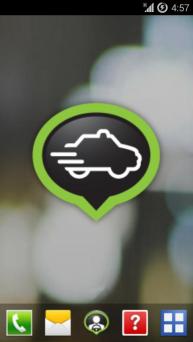App Permissions
Allows applications to open network sockets.
Allows read only access to phone state, including the phone number of the device, current cellular network information, the status of any ongoing calls, and a list of any PhoneAccounts registered on the device.
Allows an application to initiate a phone call without going through the Dialer user interface for the user to confirm the call.
Allows access to the list of accounts in the Accounts Service.
Allows using PowerManager WakeLocks to keep processor from sleeping or screen from dimming.
Allows an app to access approximate location.
Allows an app to access precise location.
Allows applications to access information about networks.
Allows applications to access information about Wi-Fi networks.
Allows applications to connect to paired bluetooth devices.
Allows applications to discover and pair bluetooth devices.
Required to be able to access the camera device.
Allows an application to modify the current configuration, such as locale.
Allows applications to change network connectivity state.
Allows applications to change Wi-Fi connectivity state.
Allows an application to clear the caches of all installed applications on the device.
Allows an application to find out the space used by any package.
This constant was deprecated in API level 21. No longer enforced.
Allows an application to call killBackgroundProcesses(String].
Allows an application to modify global audio settings.
Allows formatting file systems for removable storage.
Allows mounting and unmounting file systems for removable storage.
Allows applications to perform I/O operations over NFC.
Allows an application to see the number being dialed during an outgoing call with the option to redirect the call to a different number or abort the call altogether.
Allows an application to read the user's calendar data.
Allows an application to read the user's call log.
Allows an application to read the user's contacts data.
Allows an application to read from external storage.
Allows an application to read the low-level system log files.
Allows read only access to phone state, including the phone number of the device, current cellular network information, the status of any ongoing calls, and a list of any PhoneAccounts registered on the device.
Allows an application to read SMS messages.
Allows applications to read the sync settings.
Allows applications to read the sync stats.
Allows an application to monitor incoming MMS messages.
Allows an application to receive SMS messages.
Allows an application to receive WAP push messages.
Allows an application to record audio.
Allows an application to send SMS messages.
Allows an application to broadcast an Intent to set an alarm for the user.
Allows an application to control whether activities are immediately finished when put in the background.
Configure an application for debugging.
Allows applications to set the system time zone.
Allows applications to set the wallpaper.
Allows applications to set the wallpaper hints.
Allows an app to create windows using the type TYPE_APPLICATION_OVERLAY, shown on top of all other apps.
Allows access to the vibrator.
Allows an application to write the user's calendar data.
Allows an application to write the user's contacts data.
Allows an application to write to external storage.
Allows an application to read or write the system settings.
Allows applications to write the sync settings.
Allows applications to call into AccountAuthenticators.
Allows an application to change whether an application component (other than its own] is enabled or not.
Allows an application to delete cache files.
Allows an application to delete packages.
Allows an application to retrieve state dump information from system services.
Allows an application to install packages.
Allows modification of the telephony state - power on, mmi, etc.
Allows an application to take screen shots and more generally get access to the frame buffer data.
Required to be able to reboot the device.
Allows applications to set the system time.
Allows an application to open, close, or disable the status bar and its icons.
Allows applications to write the apn settings.
Allows an application to modify the Google service map.
Allows an application to read or write the secure system settings.

